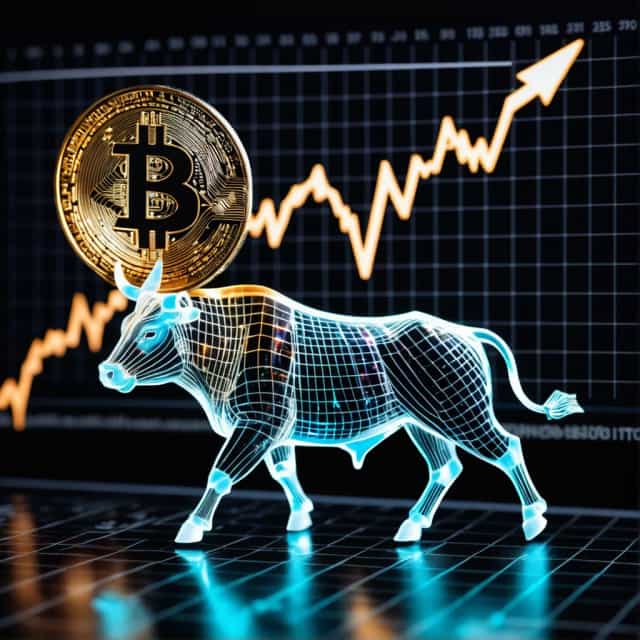
Image source: Block Media
Gold Prices Surge Past $4,000 Per Ounce Amid Economic and Geopolitical Unrest
Gold prices have smashed through the $4,000-per-ounce milestone for the first time in history, driven by escalating economic uncertainty and growing geopolitical tensions. Bloomberg reported on October 8 that gold’s meteoric rise reflects renewed investor demand for this traditional safe-haven asset as fears mount over the prolonged U.S. federal government shutdown and its far-reaching economic implications.
Gold’s 54% Rally Outpaces Stock Market Returns
Spot gold prices notched an all-time high of $4,000 per ounce, doubling its value in just two years. At the start of 2021, gold traded below $2,000, marking a stark contrast to today’s record-breaking valuation. In 2023 alone, gold prices have soared over 54%, eclipsing stock market returns. This dramatic surge stems from multiple factors, including trade uncertainty, concerns about U.S. fiscal health, and intense speculation around the Federal Reserve’s long-term autonomy.
The instability swirling around America’s financial future has made gold an increasingly attractive investment option. Investors are seeking stable, tangible assets, hedging against the volatility of equities and currency markets.
Geopolitical Turbulence Fuels Gold’s Strength
Heightened geopolitical risks coupled with a global surge in central bank gold purchases have been pivotal in sustaining gold's upward trajectory. The U.S. federal budget impasse has further amplified demand from domestic investors seeking insulation from potential market shocks. Additionally, the Federal Reserve’s transition to an easing monetary policy cycle has provided another boost to gold, which thrives in environments shaped by low interest rates and softening real yields.
September saw unprecedented investor interest in gold exchange-traded funds (ETFs), recording the highest monthly inflows in over three years. This renewed momentum highlights gold's role as a protective hedge amid global uncertainty.
Charu Chanana, a strategist at Saxo Capital Markets, explained to Bloomberg, “Crossing the $4,000-per-ounce threshold represents more than just an emotional reaction; it’s driven by strategic asset reallocation. With economic data stagnating and rate cuts imminent, real yields are softening while many tech stocks, buoyed by artificial intelligence hype, are facing overvaluation concerns.”
Concerns Over Federal Reserve Independence Highlight Inflation Risks
The $4,000 milestone coincides with intensifying scrutiny of the Federal Reserve’s independence. Former President Donald Trump’s attempts to replace Federal Reserve Chair Jerome Powell and board member Lisa Cook have triggered significant debate over the institution’s impartiality. Market analysts warn that any perceived erosion of the Fed’s independence could prompt aggressive interest rate cuts and runaway inflation—conditions that could serve as a tailwind for gold prices.
Macquarie Bank analysts stated, “Gold will likely reach its cyclical peak when market fears surrounding the Federal Reserve’s independence are at their zenith.”
The current environment evokes striking parallels to the 1970s, an era marked by surging inflation, fiscal crises, and the abandonment of the gold standard. During that decade, market instability and political pressure from President Richard Nixon pushed the Federal Reserve to lower interest rates, triggering a 15-fold increase in gold prices. Analysts suggest history may be repeating itself under today’s conditions of economic and political stress.
Ray Dalio and Goldman Sachs Forecast Gold’s Continued Ascent
Veteran investor Ray Dalio, founder of Bridgewater Associates, views gold as a far more reliable hedge than the U.S. dollar amid mounting uncertainties. Comparing today’s rally to the inflation-heavy 1970s, Dalio advocates for gold allocation in investment portfolios as a robust diversification strategy. He suggests allocating up to 15% of portfolio holdings to gold to mitigate exposure to risk tied to fiat currencies and equity fluctuations.
Goldman Sachs appears equally bullish, recently revising its long-term gold price forecast upward. Analysts now expect gold to hit $4,900 per ounce by December 2026, highlighting its sustained appeal as a safe haven. The surge in gold has also lifted other precious metals, particularly silver, which recently recorded its highest price since April 2011. Investors are increasingly gravitating toward hard assets as turbulence across equities and bonds persists.
The Market’s Appetite for Stability
Gold’s historic climb past $4,000 per ounce illustrates an appetite among investors for stability amid economic uncertainty, fiscal instability, and geopolitical turbulence. As debates about Federal Reserve independence and inflation risks dominate headlines, gold remains the premier choice for hedging against systemic shocks.
With experts forecasting more room for growth, both individual and institutional investors appear determined to capitalize on gold’s reliability as a strategic asset. The intersection of geopolitical risk, inflationary pressures, and monetary policy shifts ensures gold's central role in defending wealth during volatile times.










